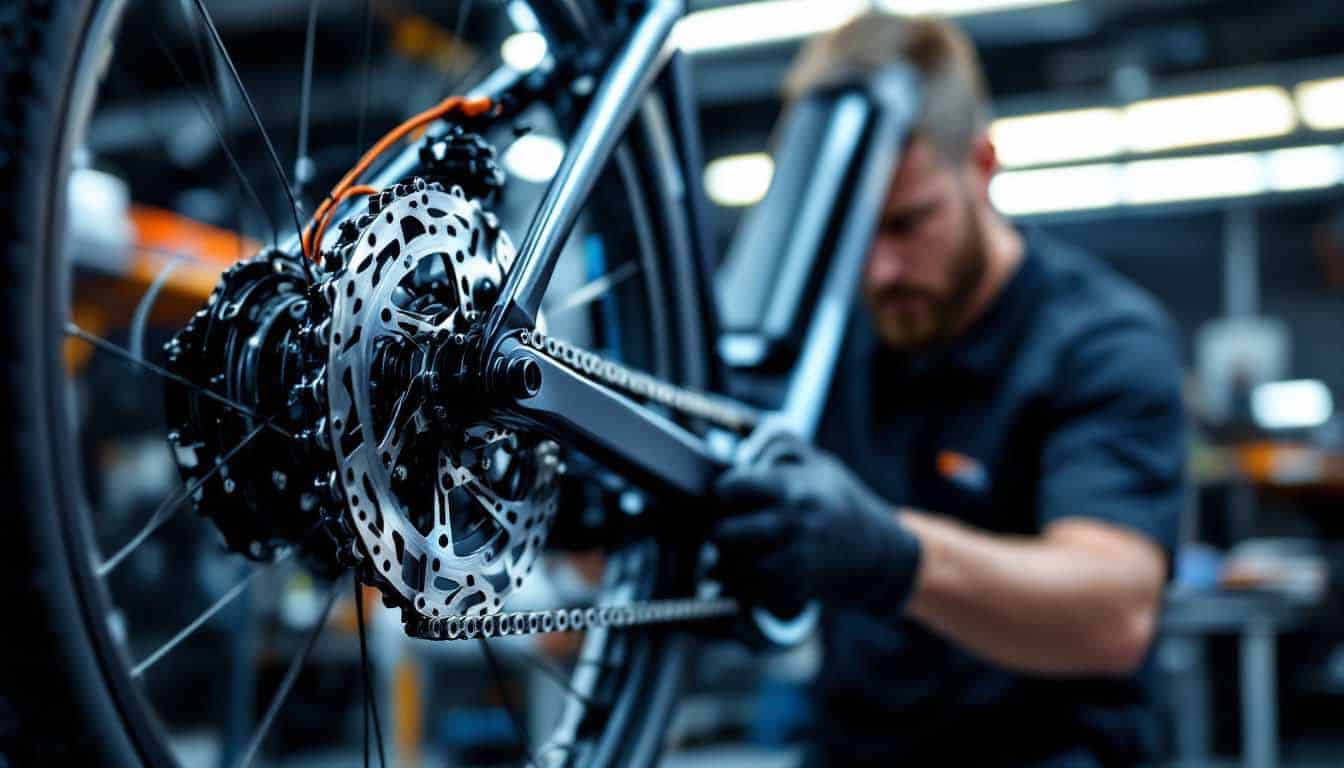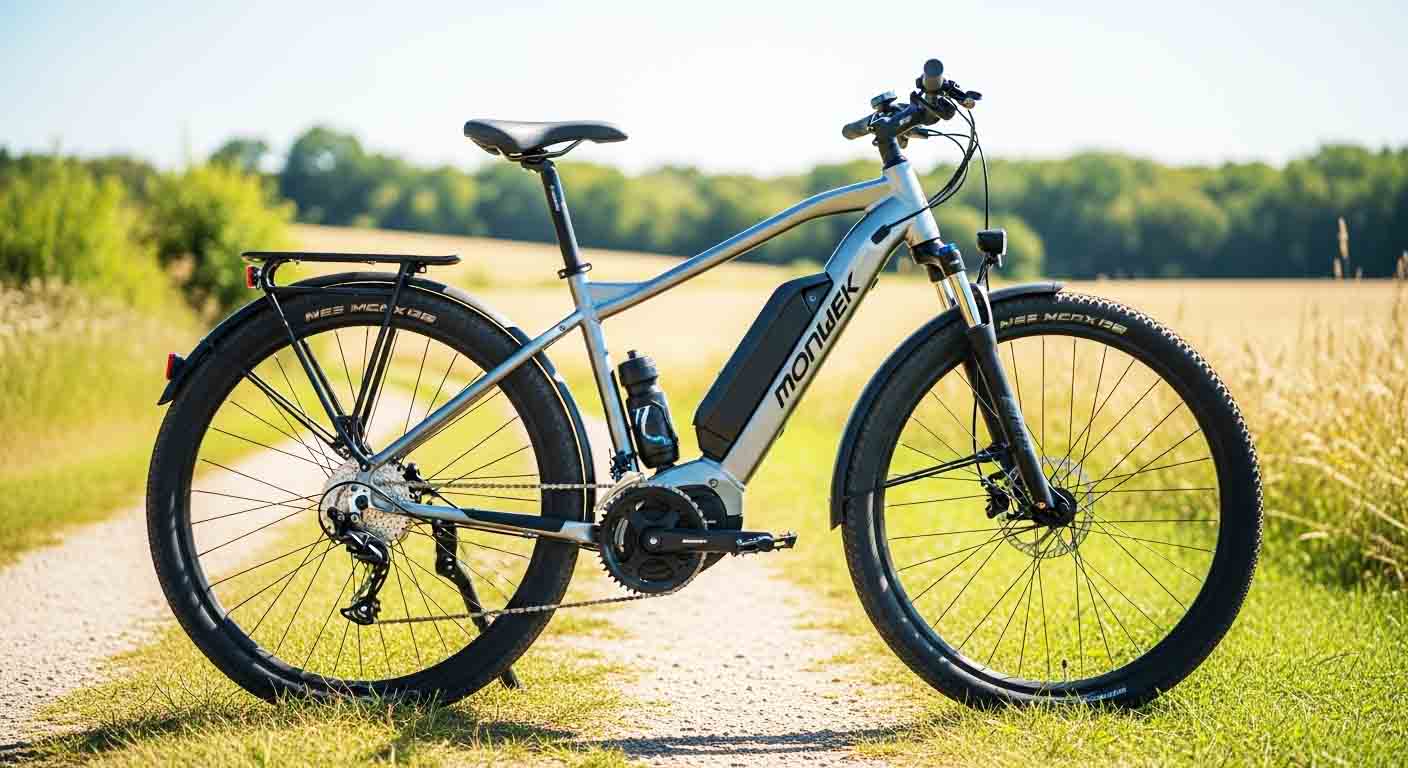Common Mistakes to Avoid When Buying Your First E-Bike
Common Mistakes to Avoid When Buying Your First E-Bike
Buying your first electric bike is exciting. E-bikes offer an eco-friendly, fun, and efficient way to commute, explore, and exercise. However, without proper research, it’s easy to make costly mistakes that affect your riding experience and your wallet. Here are the most common mistakes to avoid when buying your first e-bike.
⚠1. Ignoring Your Riding Needs
One of the biggest mistakes is choosing a bike based solely on looks or price, without considering your specific needs. Are you commuting daily? Riding off-road? Cruising around the city? The type of terrain, distance, and frequency of use should guide your choice. For example, a commuter e-bike may have thinner tires and a lighter frame, while a mountain e-bike will require stronger suspension and wider tires.
🔋2. Overlooking Battery Range
Battery capacity determines how far you can ride on a single charge. Many first-time buyers underestimate how much range they need. Remember, range depends on rider weight, terrain, assist level, and wind conditions. If you plan to use your e-bike for long rides or commutes, aim for a battery with at least 400–500Wh capacity. Always check real-world range reviews, not just the manufacturer’s claims.
⚙3. Choosing the Wrong Motor Type
E-bikes generally come with two types of motors: hub-drive (mounted in the wheel) or mid-drive (integrated into the crank). Hub motors are usually more affordable and require less maintenance, but mid-drive motors provide better balance, climbing ability, and efficiency. Selecting the right motor type will significantly improve your comfort and performance.
🚲4. Not Testing Before Buying
An e-bike might look perfect on paper but feel uncomfortable in reality. Test rides are essential to check fit, handling, and comfort. Pay attention to saddle height, handlebar position, and weight distribution. Even a few minutes of riding can help you avoid long-term discomfort.
🔧5. Forgetting About Maintenance and Service
E-bikes are more complex than traditional bicycles due to their electrical components. Before buying, make sure you have access to service centers or local bike shops familiar with e-bike repairs. Also, check the availability and cost of replacement batteries, as these can be a significant future expense.
🏃♀️6. Ignoring Weight and Portability
Some e-bikes can weigh over 60 lbs (27 kg), making them difficult to carry up stairs or transport in a car. If you need portability, consider a folding e-bike or a lightweight frame. Keep in mind that heavier bikes may also be harder to pedal without motor assistance.
👍7. Underestimating Total Costs
The initial price is only part of the investment. Accessories like helmets, locks, lights, panniers, and regular maintenance can add up quickly. Set a realistic budget that includes these extra costs to avoid surprises.
💖Final Tip:
Take your time, research, and compare models. A good e-bike can last for years and become your favorite way to get around—if you choose the right one from the start. By avoiding these common mistakes, you’ll ensure a smoother, safer, and more enjoyable riding experience.
RELATED POSTS
BWSHLF Tubeless Presta Va...
$15.99 (as of October 13, 2025 03:34 GMT +00:00 - More infoAs a site dedicated to cycling innovation, gear reviews, and next-generation bike technology, we sometimes recommend products and accessories that can enhance your riding experience. When you purchase through our affiliate links, we may earn a small commission at no extra cost to you. This support helps us continue creating valuable content, guides, and reviews for the biking community.
Please note: Product prices and availability are accurate as of the date/time indicated and are subject to change. Any price and availability information displayed on Amazon.com at the time of purchase will apply to your order.
We only recommend products we believe bring real value to cyclists who are passionate about performance, safety, and the future of biking technology.
)BLUEWIND New Noseless Ove...
$25.15 (as of October 13, 2025 03:34 GMT +00:00 - More infoAs a site dedicated to cycling innovation, gear reviews, and next-generation bike technology, we sometimes recommend products and accessories that can enhance your riding experience. When you purchase through our affiliate links, we may earn a small commission at no extra cost to you. This support helps us continue creating valuable content, guides, and reviews for the biking community.
Please note: Product prices and availability are accurate as of the date/time indicated and are subject to change. Any price and availability information displayed on Amazon.com at the time of purchase will apply to your order.
We only recommend products we believe bring real value to cyclists who are passionate about performance, safety, and the future of biking technology.
)Hapleby 4PCS Premium Bike...
$8.99 (as of October 13, 2025 03:34 GMT +00:00 - More infoAs a site dedicated to cycling innovation, gear reviews, and next-generation bike technology, we sometimes recommend products and accessories that can enhance your riding experience. When you purchase through our affiliate links, we may earn a small commission at no extra cost to you. This support helps us continue creating valuable content, guides, and reviews for the biking community.
Please note: Product prices and availability are accurate as of the date/time indicated and are subject to change. Any price and availability information displayed on Amazon.com at the time of purchase will apply to your order.
We only recommend products we believe bring real value to cyclists who are passionate about performance, safety, and the future of biking technology.
)Under Armour Men's Sportstyle Color...
$16.99 (as of October 13, 2025 03:34 GMT +00:00 - More infoAs a site dedicated to cycling innovation, gear reviews, and next-generation bike technology, we sometimes recommend products and accessories that can enhance your riding experience. When you purchase through our affiliate links, we may earn a small commission at no extra cost to you. This support helps us continue creating valuable content, guides, and reviews for the biking community.
Please note: Product prices and availability are accurate as of the date/time indicated and are subject to change. Any price and availability information displayed on Amazon.com at the time of purchase will apply to your order.
We only recommend products we believe bring real value to cyclists who are passionate about performance, safety, and the future of biking technology.
)WOLFILIST Bike Bag - Waterproof Bik...
$17.99 (as of October 10, 2025 03:29 GMT +00:00 - More infoAs a site dedicated to cycling innovation, gear reviews, and next-generation bike technology, we sometimes recommend products and accessories that can enhance your riding experience. When you purchase through our affiliate links, we may earn a small commission at no extra cost to you. This support helps us continue creating valuable content, guides, and reviews for the biking community.
Please note: Product prices and availability are accurate as of the date/time indicated and are subject to change. Any price and availability information displayed on Amazon.com at the time of purchase will apply to your order.
We only recommend products we believe bring real value to cyclists who are passionate about performance, safety, and the future of biking technology.
)KEMIMOTO Motorcycle Handlebar Bag U...
$32.99 (as of October 10, 2025 03:29 GMT +00:00 - More infoAs a site dedicated to cycling innovation, gear reviews, and next-generation bike technology, we sometimes recommend products and accessories that can enhance your riding experience. When you purchase through our affiliate links, we may earn a small commission at no extra cost to you. This support helps us continue creating valuable content, guides, and reviews for the biking community.
Please note: Product prices and availability are accurate as of the date/time indicated and are subject to change. Any price and availability information displayed on Amazon.com at the time of purchase will apply to your order.
We only recommend products we believe bring real value to cyclists who are passionate about performance, safety, and the future of biking technology.
)4 Pairs Bike Brake Pads,B...
$9.99 (as of October 13, 2025 03:34 GMT +00:00 - More infoAs a site dedicated to cycling innovation, gear reviews, and next-generation bike technology, we sometimes recommend products and accessories that can enhance your riding experience. When you purchase through our affiliate links, we may earn a small commission at no extra cost to you. This support helps us continue creating valuable content, guides, and reviews for the biking community.
Please note: Product prices and availability are accurate as of the date/time indicated and are subject to change. Any price and availability information displayed on Amazon.com at the time of purchase will apply to your order.
We only recommend products we believe bring real value to cyclists who are passionate about performance, safety, and the future of biking technology.
)Bicycle Seat Replacement,...
$18.85 (as of October 13, 2025 03:34 GMT +00:00 - More infoAs a site dedicated to cycling innovation, gear reviews, and next-generation bike technology, we sometimes recommend products and accessories that can enhance your riding experience. When you purchase through our affiliate links, we may earn a small commission at no extra cost to you. This support helps us continue creating valuable content, guides, and reviews for the biking community.
Please note: Product prices and availability are accurate as of the date/time indicated and are subject to change. Any price and availability information displayed on Amazon.com at the time of purchase will apply to your order.
We only recommend products we believe bring real value to cyclists who are passionate about performance, safety, and the future of biking technology.
)UPANBIKE Adult Bike Helme...
$19.99 (as of October 13, 2025 03:34 GMT +00:00 - More infoAs a site dedicated to cycling innovation, gear reviews, and next-generation bike technology, we sometimes recommend products and accessories that can enhance your riding experience. When you purchase through our affiliate links, we may earn a small commission at no extra cost to you. This support helps us continue creating valuable content, guides, and reviews for the biking community.
Please note: Product prices and availability are accurate as of the date/time indicated and are subject to change. Any price and availability information displayed on Amazon.com at the time of purchase will apply to your order.
We only recommend products we believe bring real value to cyclists who are passionate about performance, safety, and the future of biking technology.
)














